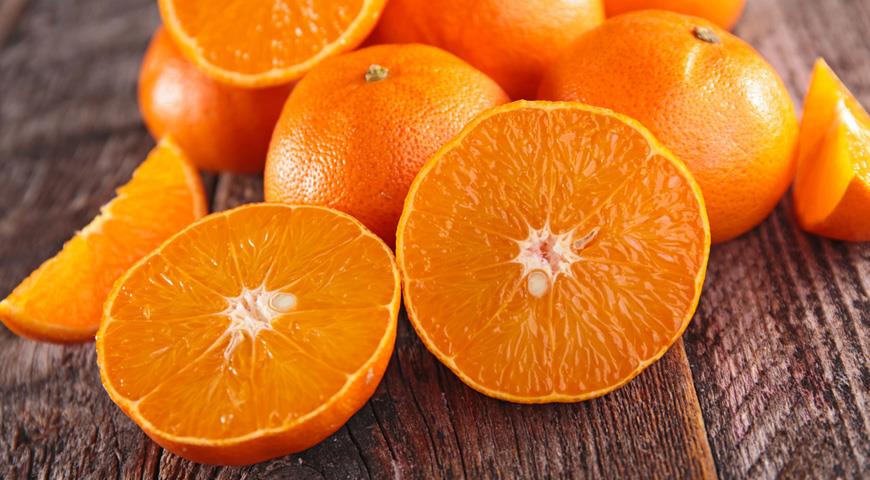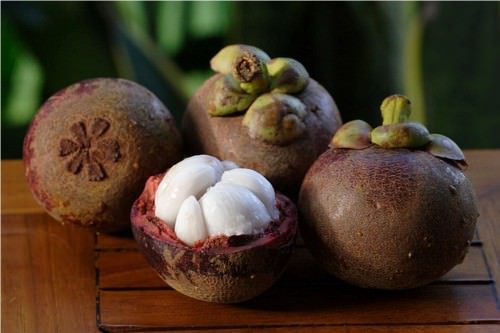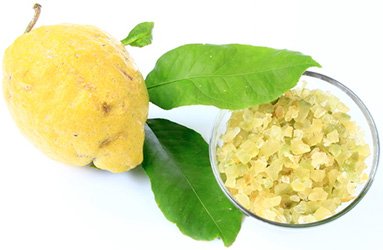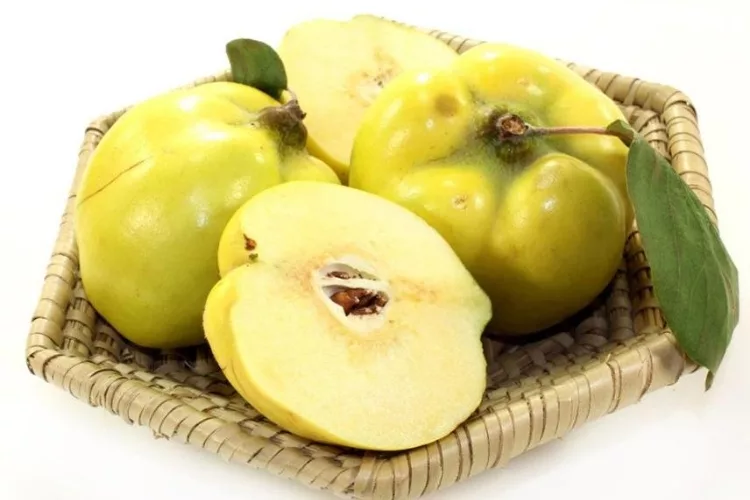15 Alluring Facts About Cherimoya
by Editorial Staff
Ice cream tree - this is how this plant is very often called. Cherimoya got this name for its consistency and taste, similar to a cold dessert.
Facts About Cherimoya

- Cherimoya is a fruit tree of the Annonov family that grows wild in the Andes. His homeland is Bolivia, Peru, Ecuador, and Colombia. There are large plantations in Italy, Egypt, Algeria, Australia, and Spain. Translated from the Inca language, the name of the fruit sounds like "cold seeds".
- Cherimoya is a fruit that looks somewhat like an apple and tastes like a banana with pineapple.
- Their peel is bright green, with roughness, and the shape is pear-shaped. They weigh from 0.3 to 2 kg with a diameter of about 10 cm.
- The pulp is smooth inside, with a small amount of black large seeds with a perfectly smooth and shiny surface. It tastes like a little bit of everything - mango, plum, strawberry, banana, pineapple. Only it is used for food and juice, peel and seeds are not suitable for this.
- The fruit of the tree is considered exotic and is consumed both raw and cooked.
- Even 20-30 years ago, cherimoya was practically not imported to other countries due to the excessive softness and poor preservation of the fruit. But with the development of new, more resistant varieties, long-term transportation became possible.
- It is very easy to determine the ripeness of this fruit by the color of the peel. The more brown spots it has on it, the sweeter the cherimoya will be. If you shake a ripe fruit, the sound of seeds detached from the pulp will be clearly heard in it. Its softness should be like that of an avocado, slightly springy, not stiff, or too soft.
- Cherimoya skin can be peeled like a potato, but very thinly, and then bite like an apple. Or you can simply cut the fruit lengthwise into two halves and eat it with a spoon. But you need to get rid of the bones in any case.
- Cherimoya is the best fruit for making desserts; yogurts, drinks, sorbet, ice cream are made from it. Fruit juice is added to alcoholic drinks and fruit salads. The pulp is frozen and eaten as a confection. It is very tasty to wash down sweet cherimoya with black coffee.
- The calorie content of the pulp of this fruit is 74 kcal per 100 grams. Nutritional value (100 g) - proteins - 1.65 g, carbohydrates - 15.5 g, fats - 0.7 g. Cherimoya contains a large amount of potassium, magnesium, and phosphorus. It contains slightly less iron, sodium, calcium, copper, and manganese. The vitamin complex is represented by group B, vitamins C and PP.
- The fruit is very nutritious and easily digestible. Its use will help normalize the acidity of the stomach, improve liver function, and therefore help in the fight against excess weight.
- Magnesium and potassium help to maintain normal blood pressure and are a good preventive measure for cardiovascular diseases. Ascorbic acid, in addition to acting as a general tonic, fights free radicals in the body, that is, helps it to be in good shape. Cherimoya is used in medicine and as an antibacterial agent.
- Cherimoya is ideal for freezing for the winter, for which it is washed, dried, cut into pieces, and placed on film in the freezer. But dry, in this case, is not relevant, since the pulp is too tough. The resulting dried fruits can hardly be used to prepare compote.
- Cherimoya is recognized worldwide as one of the best and healthiest fruits. Mark Twain wrote about this fruit that he is "perfect itself."
- Considering that there are few contraindications to cherimoya, you should definitely taste it at least once in your life. Having tasted this fruit properly, you will certainly want to buy it again, because it is very tasty, relatively inexpensive and extremely healthy.
 Also Like
Also Like

Clementines are a hybrid of an orange and a mandarin, and this variety was bred by the French priest and breeder Father Clement, after whom the exotic fruit got its name. Externally, clementines are similar to tangerines with one difference – there are pr...

10 Interesting Facts About Arugulas
Indau, eruka, rocket, sowing caterpillar – this plant has many names, but whatever you call it less useful for health, it does not become from this. Arugula has a pleasantly bitter flavor that can add a spicy taste to any dish. Many who have tried it once...

10 Interesting Facts About Asparagus
All over the world, spring is considered the season of asparagus, when the first young juicy shoots appear from the ground. In our country, you don’t even have to look for local asparagus in the markets – you need to grow it (and it doesn’t grow in one ye...

10 Interesting Facts About Broccoli
There is more vitamin C in broccoli cabbage than in lemon, A – almost as much as in carrots, and the rest of the trace elements are certainly not less than in related vegetables of the cabbage family. It should be treated with caution by those who have in...

10 Interesting Facts About Cauliflowers
Cauliflower is superior to all other varieties in taste and nutritional content. What do you know about Cauliflowers? We will tell you 10 interesting facts about him, and if you have something to add, be sure to leave your comment under this post! Caulifl...

10 Interesting Facts About Dills
Many people actively use dill when preparing a wide variety of dishes; this seasoning is considered truly universal. What do you know about Dills? We will tell you 10 interesting facts about him, and if you have something to add, be sure to leave your com...

10 Interesting Facts About Fennels
Not the most frequent guest in our kitchens, but his every appearance should be noted. What do you know about Fennels? We will tell you 10 interesting facts about him, and if you have something to add, be sure to leave your comment under this post! The ho...

10 Interesting Facts About Garlic
Many doctors recommend eating garlic, in the absence of contraindications, of course. This is an extremely useful product, notable for the fact that when cooked or dried, it retains a significant proportion of useful substances. What do you know about Gar...

10 Interesting Facts About Greens
We know vegetables and greens are good for you. But what exactly is their strength and why are they so important in the daily diet? After examining the opinions of people leading a healthy lifestyle, we are a selection of 10 interesting facts. What do you...

10 Interesting Facts About Lettuce
Lettuce is known all over the world and has been actively used since the 20th century. People can grow lettuce on their own to consume its leaves or stump. It should be noted that lettuce varieties such as Roman are produced mainly in Europe (in the Medit...

10 Interesting Facts About Parsley
Even the usual seasoning can harbor a lot of unusual things. What do you know about Parsley? We will tell you 10 interesting facts about him, and if you have something to add, be sure to leave your comment under this post! Did you know that there are curl...

10 Interesting Facts About Pumpkins
Orange, juicy, bright, tasty, useful! Pumpkin is a real symbol of autumn. And what do you know about pumpkins? We will tell you 10 interesting facts about pumpkins, and if you have something to add, be sure to leave a comment under this post! In fact, the...

12 Interesting Facts About Daikon
Due to the high content of vitamins, daikon strengthens the immune system, and its phytoncides kill microbes. Daikon removes excess fluid from the body, cleanses the liver and kidneys, stimulates the stomach and intestines, and is even able to dissolve ga...

12 Interesting Facts About Mangosteen
We have already written about dragon fruit – one of the most popular fruits in Southeast Asia, especially in Thailand. We decided to continue the series of notes dedicated to fruits, which can be seen in abundance on Thai food stalls. The turn of mangoste...

12 Interesting Facts About Mustard
Mustard is an annual plant that grows up to 60 cm in height. The bright yellow flowers form seed pods, each containing about 6 seeds. What do you know about Mustard? We will tell you 12 interesting facts about him, and if you have something to add, be sur...

Citron is a rare fruit that belongs to the citrus family. At the moment, it grows only in some rather limited areas. Theophrastus, Virgil, Martial also spoke about this fruit, it is also mentioned in the Bible. The history of the origin of this citrus tre...

Guava is an evergreen plant of the Myrtle family, which includes about 100 species. This plant is native to the tropics of South America, but today it is grown in other parts of the world. The guava fruit is widely used for making desserts. Guava fruits a...

13 Interesting Facts About Beans
Many dishes contain beans, and in some countries, they are an integral part of the national cuisine, for example, in Mexico. What do you know about Beans? We will tell you 13 interesting facts about him, and if you have something to add, be sure to leave ...

14 Fascinating Facts About Chaenomeles
Japanese quince, or Japanese Chaenomeles, is a representative of the Plum subfamily, the Pink family, of the order Rosaceae. Japanese quince is small in height (grows from 1.5 to 4 m) with falling leaves (rarely semi-evergreen) bush or low tree, which is ...
Comments for "15 Alluring Facts About Cherimoya"
 |
 |
 |
 |
Get FREE Recipe Gifts now. Or latest free cooktops from our best collections.
Disable Ad block to get all the secrets. Once done, hit any button below
 |
 |
 |
 |
